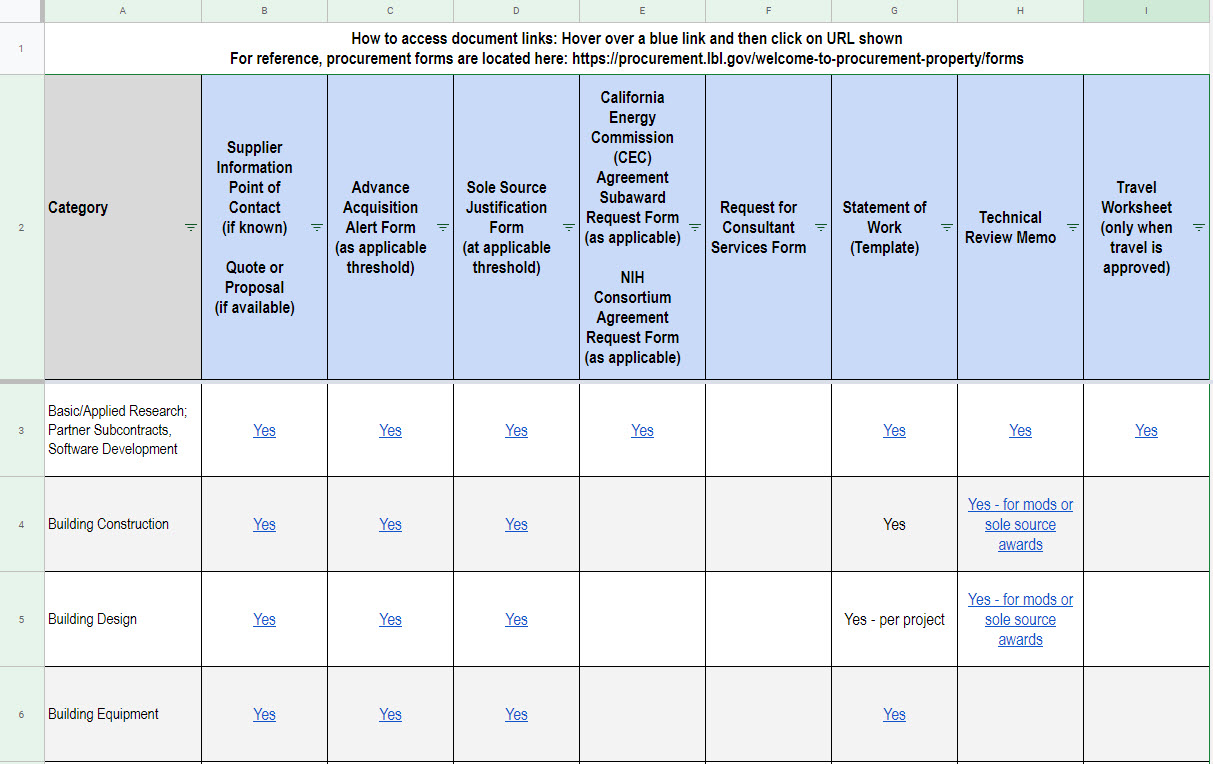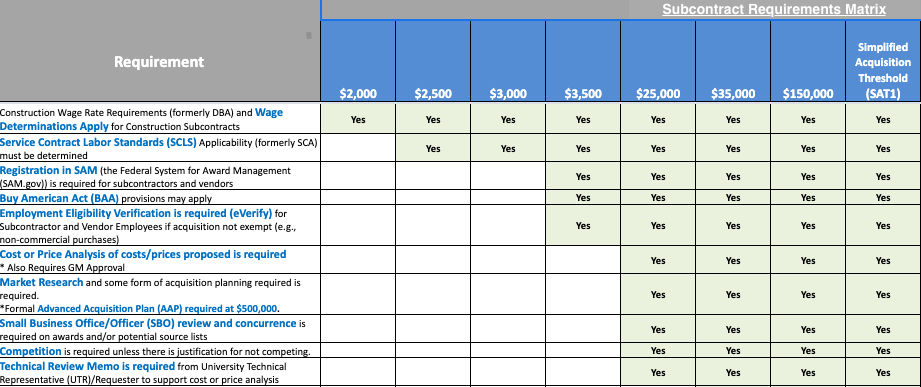Acquisition planning is an essential tool for both Divisions and Procurement providing a method for early notification of requirements, as well as an understanding of the acquisition process from inception through completion.
For the acquisition of goods or services $500,000 or more, completion of the Advance Acquisition Alert (AAA) is required. For questions about this process, contact the Procurement Help Desk, or your Procurement Project Partner (PPP). Once the AAA is submitted, a representative from Procurement will contact you to discuss your requirements.
The acquisition planning areas below are reflective of the requirements outlined in the Acquisition Planning RPM D2 that can be found here.
Acquisition Cycle Times
The complexity of the acquisition drives the cycle times.
| $ Value | Designation | Average Cycle Time * to Get Award |
|---|---|---|
| eBuy $0 - $25K | Simple | 4 days* |
| $0K - <$2K | Simple can be on a PCard or PO | 7 days* |
| >$2K - <$25K | Simple | 16 days* |
| >$25K - <$250K | Moderate | 26 days* |
| >$250K - <$500K | Significant | 3 – 6 months* depending on complexity |
| >$500K - <$1M | Major | 3-6 months* or more Send us Advance Acquisition Alert as soon as the need for a contract is known/ Contract Review Board (CRB) may be required Please see this document for the key components of the Acquisition Lifecycle |
| >$1M - <$10M | Complex | May require additional approvals and/or DOE Approval 6 - 9 months* or more Send us an Advance Acquisition Alert as soon as the need for a contract is known/ Contract Review Board (CRB) may be required Please see this document for the key components of the Acquisition Lifecycle |
| Over $10M | Highly Complex | Requires DOE Approval 9 - 12 months* or more Send us Advance Acquisition Alert as soon as the need for a contract is known/ Contract Review Board (CRB) may be required Please see this document for the key components of the Acquisition Lifecycle |
*Average Calendar Days
Please see this document for the key components of the Acquisition Lifecycle
Procurement time begins when complete documents are received from the division
Cycle Times are based on total contract value, not the requisition value
Acquisition Preparation Matrix
The matrix is organized as follows:
- The first column lists various acquisition categories
- The subsequent column headings reference documents and preliminary information associated with acquisition requests
- Rows of the matrix indicate whether the referenced documents are needed by Procurement and/or other information is useful, if available; when submitting a requisition for the procurement category
Subcontract Requirements Matrix
This matrix is provided for reference by non-procurement personnel (e.g., Requesters and University Technical Representatives) for general reference only, many thresholds are not represented here and exclusions apply that aren’t indicated. Consult with the Procurement Specialist or Group Manager for thresholds/requirements not reflected in the matrix.
The matrix is organized as follows:
- The first column lists various federal and/or Department of Energy acquisition requirements that have to be met for the anticipated subcontract.
- The columns to the right provide the dollar thresholds at which the various requirements apply.
The thresholds apply to the total value of the acquisition. This means that it applies to the value for the entire scope of work to be performed, including multi-year performance periods and options. The most efficient and effective approach is for a subcontract to be issued for the full scope of an engagement, including options where possible. When submitting your request for goods/services, include the entirety of the scope and potential value; do not parse out the scope to avoid reaching thresholds.
Unauthorized Commitments
Individuals are not permitted to purchase directly from suppliers unless a contract has been established with that supplier or they have been approved to use a Laboratory PCard. The authority to make contractual commitments through procurement transactions has been specifically delegated to individuals primarily assigned to Procurement. Only those who have delegated Procurement authority may commit funds on behalf of the Laboratory. This includes entering into contracts, modifying contracts, or terminating contracts. Purchases or commitments made by individuals without delegated procurement authority are considered unauthorized, and must undergo a ratification process to determine whether the unauthorized commitment would otherwise have been proper and in the best interest of the Laboratory.
Examples of unauthorized commitments include, but are not limited to:
- Committing the expenditure of Laboratory funds by an individual with no delegated procurement authority (For example, calling a supplier directly to request a repair)
- Requesting or accepting goods or services from a supplier when a contract has not yet been awarded (Note: requisitions are not contracts)
- Authorizing work that exceeds the total allowable expenditures or extends beyond the current term of a contract or agreement
- Authorizing a supplier/subcontractor to perform work or deliver goods without written, delegated procurement authority
- Ordering goods or services that are outside the scope of the contract or agreement
- Authorizing an order under a blanket contract or master agreement without formal designation in the contract as having authority to issue orders
- Improper use of the Laboratory procurement credit card
- Making a contractual commitment exceeding the level of an individual’s delegated procurement authority
- Directing another person to do any of the above, whether intentionally or unintentionally
If you suspect an unauthorized commitment has been made, contact the Procurement Help Desk so that Procurement can inform the supplier, notify the responsible individual, and initiate a ratification process. If the commitment is ratified, the Procurement Specialist will issue a purchase order or contract to the supplier so that work or shipments can commence or continue, and the supplier can be paid.
Unauthorized commitments are a violation of Laboratory policy and individuals making commitments without proper authority are subject to corrective and/or disciplinary action and may be responsible for payment of charges incurred. To avoid making unauthorized commitments, individuals should always use the established purchasing channels to initiate a purchase request or make a purchase.





